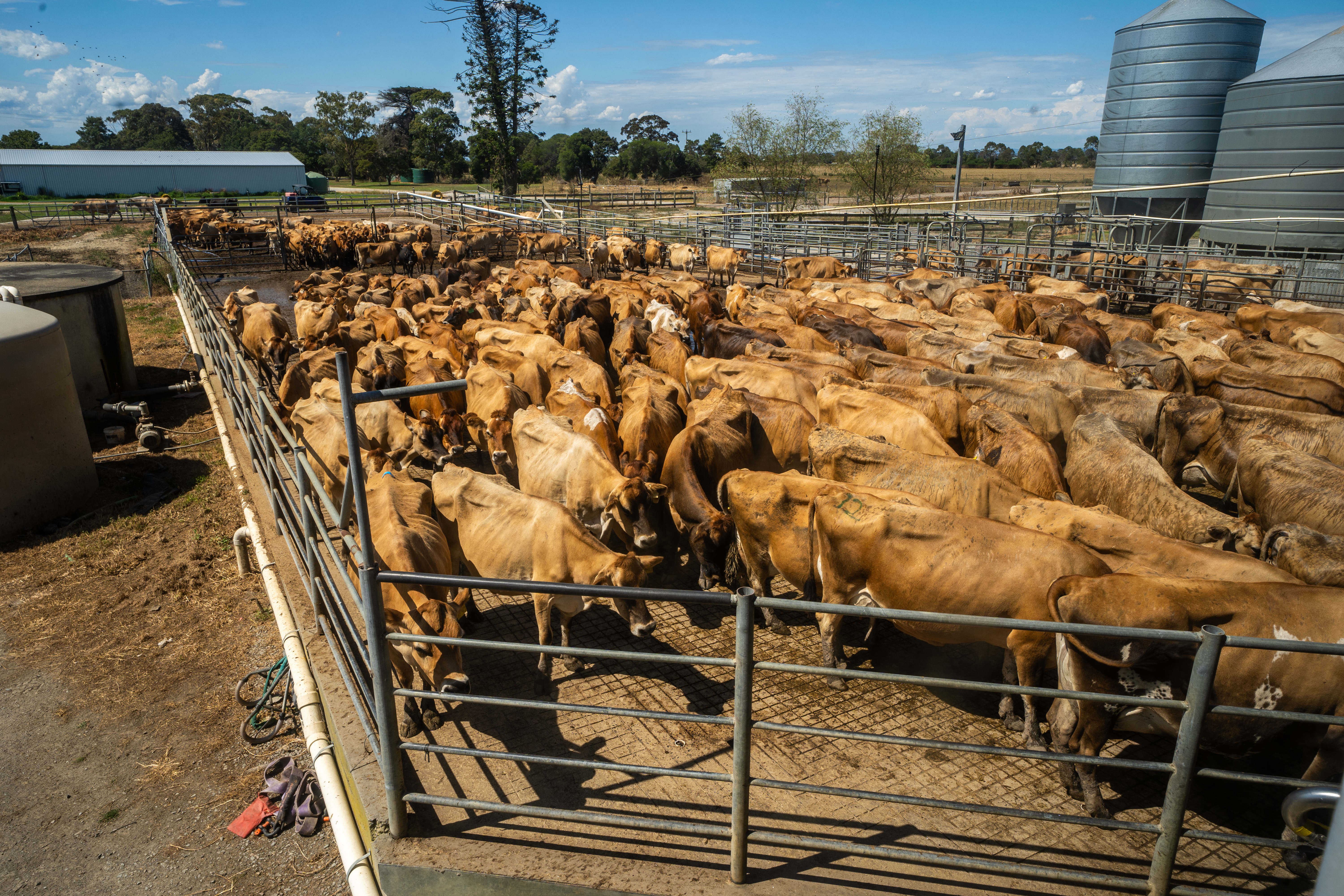Environmental Impacts
Environmental impacts of cow's milk
Methane and waste

Cows waiting to be milked (Farm Transparency Project, 2024)
Cattle manure emits methane. According to The United Nations Environment Programme:
"Methane is the primary contributor to the formation of ground-level ozone, a hazardous air pollutant and greenhouse gas, exposure to which causes 1 million premature deaths every year. Methane is also a powerful greenhouse gas. Over a 20-year period, it is 80 times more potent at warming than carbon dioxide."
The warming potential of methane is 25 times greater than that of CO2, meaning 1 tonne of methane is the equivalent of 25 tonnes of carbon dioxide. The United Nations Food and Agriculture Organisation reported that the livestock sector produces more greenhouse gas emissions than the entire transport sector. The dairy industry alone is producing 12% of Australia's total GHG emissions.
10% of Australian water use is attributed to the dairy industry. It takes a massive 1,020 litres of water to produce just 1 litre of milk.
Additionally, like other forms of animal farming, clearing land to graze dairy cows is responsible for large amounts of deforestation, destroying habitats and ecosystems, and hastening the effects of global warming. It is estimated that 79% of deforestation in Australia is caused by clearing land to raise livestock. In contrast, crop agriculture accounts for only 4% of land clearing.


